Maybe you’re wondering, what can I feed my fish? The answer is not simple because each species has its own nutritional requirements.
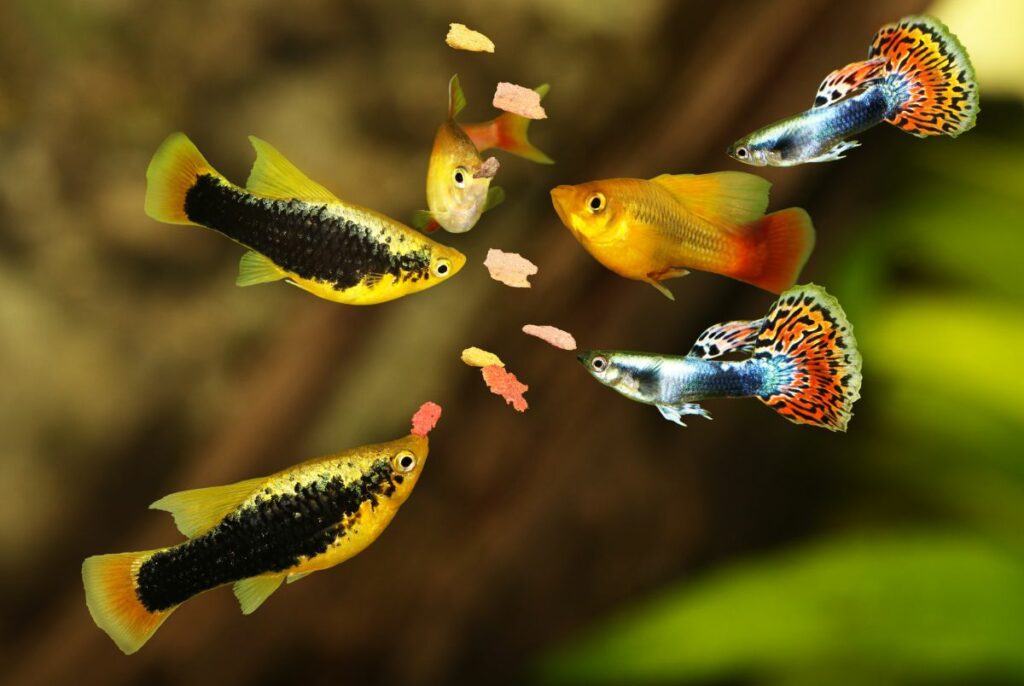
There are many different types of fish food. There is food for freshwater fish, saltwater fish, bottom-feeders, etc.
Before deciding on which food to get, you should do proper research into what your fish needs.
What Is Fish Food?
Fish food is food designed specifically for our aquatic pets. Usually, it is created by scientists who know your fish’s nutritional needs.
What Do Fish Eat?
What fish eat depends on their species, habitat, and body makeup.
Most wild fish eat live food, whether that be an animal or a plant. Fish in captivity tend to receive a staple diet of pellets or flakes.
Still, fish food companies try to match the nutrition of fish food to that of food found in the wild.
Natural fish food includes things like live food and greens.
What Can You Feed Fish?
You need to know what to feed fish if you’re going to care for them.
First, ask yourself, is my fish herbivorous, omnivorous, or carnivorous?
Once you know that, you can choose which food is actually best for your fish
Aquarium fish food includes:
Dry Food
For most fish, their staple diet consists of flakes, granules, or pellets. They may float at the top of the water, or they may sink to the bottom of the tank.
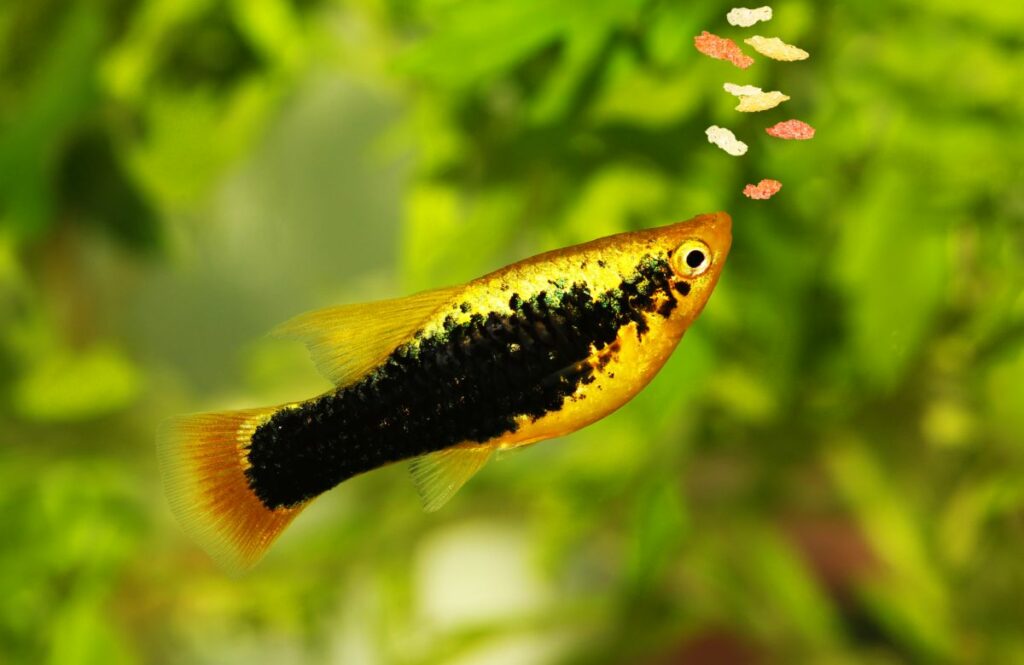
Floating food is best suited for fish that eat from the surface of the water. This includes fish like goldfish, betta fish, and tetras. Sinking pellets are best suited for bottom-feeders like catfish and loaches.
Not all pellets are the same, though.
Often, dry food is designed and marketed toward a specific species of fish. Food is often labeled for “bettas”, “goldfish”, “tropical fish”, or “cichlids”, among others.
This is necessary because bettas need a completely different diet than goldfish. Goldfish food is high in fiber and minerals. They are a mostly herbivorous species. Bettas cannot digest plant protein and are strictly carnivorous.
The food for tropical fish is higher in protein and lower in vitamins than food made for goldfish. Even saltwater tropical fish food is often different from freshwater fish food.
Labeling fish food for a specific species simply makes it easier for the consumer to pick the right kind.
Another kind of dry fish food includes spirulina or algae sheets. These are usually marketed toward saltwater species who eat this kind of food. There are waterproof clips that you can attach to the side of your aquarium or at the bottom of the tank. These will hold the sheets so that they don’t float around the tank.
Feeding Pellets
You should know how to feed fish pellets. You need to be more careful with pellets than flakes because they expand when they get wet. So, you should feed your fish fewer pellets than you think they need. They will expand and fill up their belly.
One mistake new betta owners often make is feeding too many pellets. A betta’s stomach is only about the size of its eye. They can’t eat very much, but they will try to eat as much as you give them. Overeating can lead to swim bladder issues.
Frozen Food
Frozen food is a great option for both freshwater and saltwater species who need meat in their diet. Frozen food often comes in giant sheets that you have to break off. Or, it comes in individually-sized blocks that make for easier feeding.
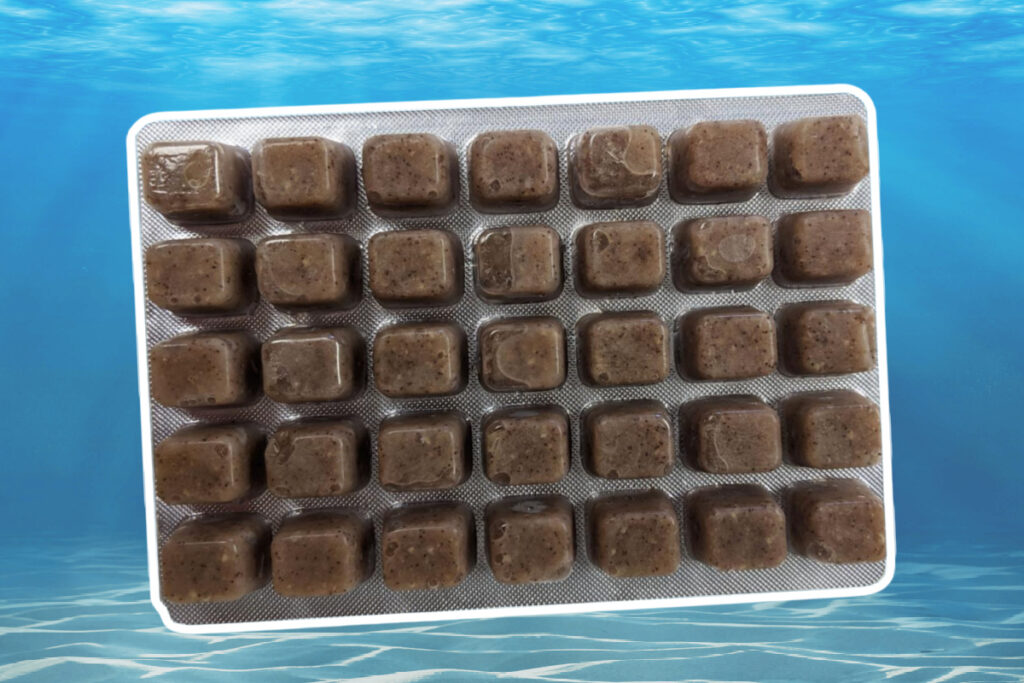
Frozen food options often consist of shrimp (freshwater and saltwater species), bloodworms, plankton, prawn, muscles, and krill.
You don’t want to drop the frozen block of food into the water. It will sink to the bottom of the tank, and once it thaws, the food will get lost in the substrate. Instead, thaw it in a bit of water before feeding. Once it’s thawed, you can use a set of tongs to add the food to the water column.
Freeze-Dried Food
Freeze-dried foods are a good option if you don’t want to deal with frozen or live food. It’s also a good way to provide your top-feeding fish with meat since it floats.
Freeze-dried food options include Mysis shrimp, tubifex worms, bloodworms, and other insects.
Live Foods
Live, meaty foods are an excellent choice for omnivores and carnivores. Live food options include brine shrimp, ghost shrimp, crickets, bloodworms, blackworms, shrimp, zooplankton, guppies, rosy red minnows, and common goldfish.
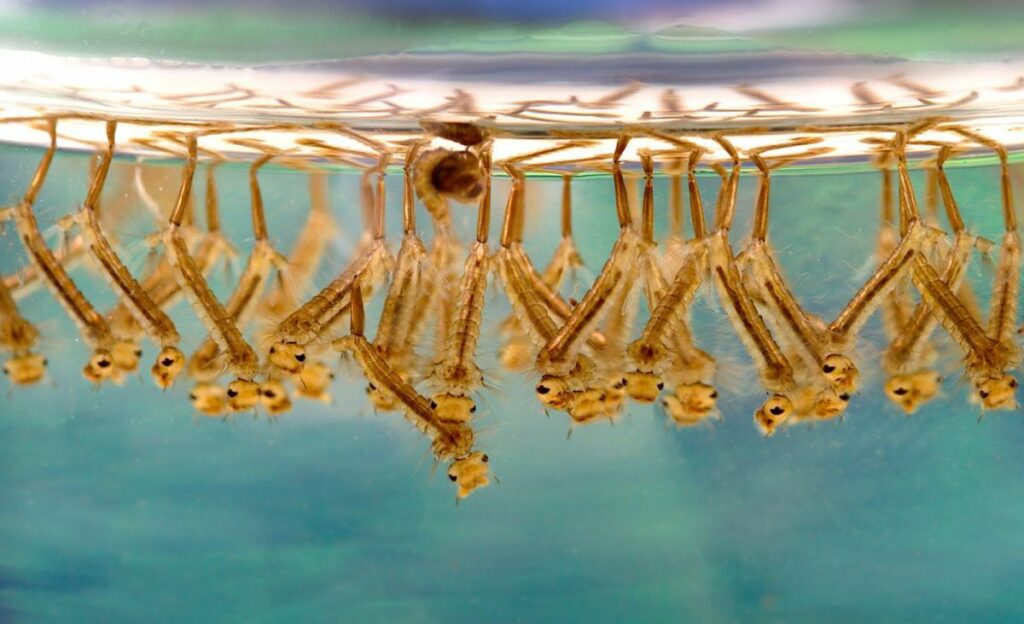
Live food can be harder to take care of, but it’s worth it for the well-being of your fish.
Many times, fish keepers will buy live food and feed them all at once. Feeders like guppies, goldfish, and shrimp may be able to hide for a while before they get eaten. This will provide your fish with a continuous snack for several days.
Others may set up aquariums in their home for their feeders. These aquariums keep the feeders safe until you’re ready to use them. Feeder aquariums are especially effective for feeders like shrimp and snails. They are fast breeders, so rather than buying new food all the time, you’ll get new babies to stock your tank.
You can keep zooplankton and worms in the fridge for a couple of weeks. They will stay alive and well until you’re ready to use them.
Greens
Herbivorous and omnivorous fish will enjoy aquatic vegetation or vegetables.
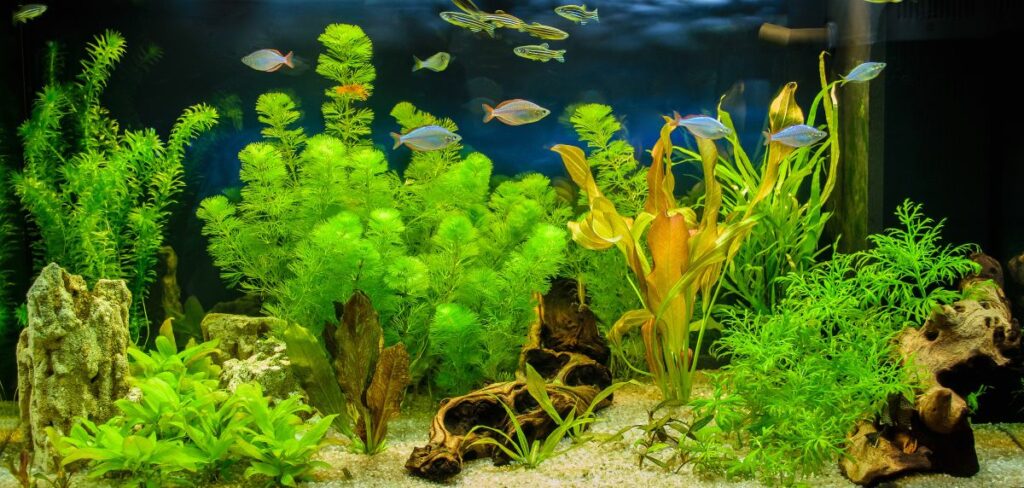
Aquatic vegetation helps keep your water quality pristine. It makes your tank look nicer, and it provides your fish with constant food.
Vegetables like lettuce, cucumber, spinach, and zucchini are good as well. Be careful not to leave them in the tank for too long. Remove them at least every 24 hours before they begin to rot.
When & How To Feed Fish
It’s common for fish keepers, especially new ones, to overfeed their fish. It’s more detrimental to overfeed your fish than it is to underfeed them. Overfeeding can lead to a dirty tank which can cause the ammonia, nitrites, and nitrates to spike.
Aim to feed your fish no more than they can eat in about three minutes. You should remove any food that isn’t eaten by this time. You can use a fine-meshed net to remove smaller pieces of food.
Most adult fish only need feeding about once a day. There are some exceptions, like goldfish and seahorses, who need several feedings. You’ll want to do some research into your fish’s metabolism and how often they need to eat.
Herbivores often need more feeding than carnivores. They graze on plant matter throughout the day. Carnivores tend to fill their bellies at once.
Juvenile fish are growing, so they need to feed about three to four times a day.
What kind of fish you have also determines how and when you’ll feed your fish. The RSPCA says, “Different tropical fish species may need their food given to them in different ways. Middle and bottom-dwelling species will need their food in quickly sinking food or compressed food ‘tablets’. Nocturnal species, like some catfish, need to be fed last thing at night.”
Conclusion
Popular fish food includes dry, freeze-dried, frozen, live, and greens. What combination your fish needs depends on their species, so research is essential.
Fish are complex creatures like every other animal. They should be shown consideration when it comes to their diet. What works for clownfish is not going to work for a goldfish.
Once you find the right food for your fish, you’ll notice them become healthier, more active, and more colorful.
FAQs
If your fish is a herbivore, you can feed them blanched vegetables. Some options include peas, carrots, lettuce, spinach, and zucchini. They can also have small portions of fruit like apples, pairs, and mangos.
Goldfish and koi can have the occasional snack of cooked rice or oatmeal.
You should not give most ‘human food’ to your fish as it’s not healthy for them.
Most mammals tear and chew their food. Fish often have teeth as we do, but do they eat the same way? The Florida Museum says they don’t.
“Many carnivorous fishes (meat eating) use their sharp teeth to capture and hold prey while swallowing it whole or in large pieces. We use teeth to grind food into tiny pieces, and then we swallow.
Bottom dwellers such as rays have large flat teeth that crush the shellfish they eat. A number of herbivorous fishes (grazers) grind their food in a manner similar to humans. However, the tooth-like grinding mills are located in the throat rather than in the mouth, and are referred to as pharyngeal (“phar-yn-geal”) teeth.”
